
“And further, by these, my son, be admonished: of making many books there is no end; and much study is a weariness of the flesh.” —Ecclesiastes 12:12
Library of Congress Established,
April 24, 1800
 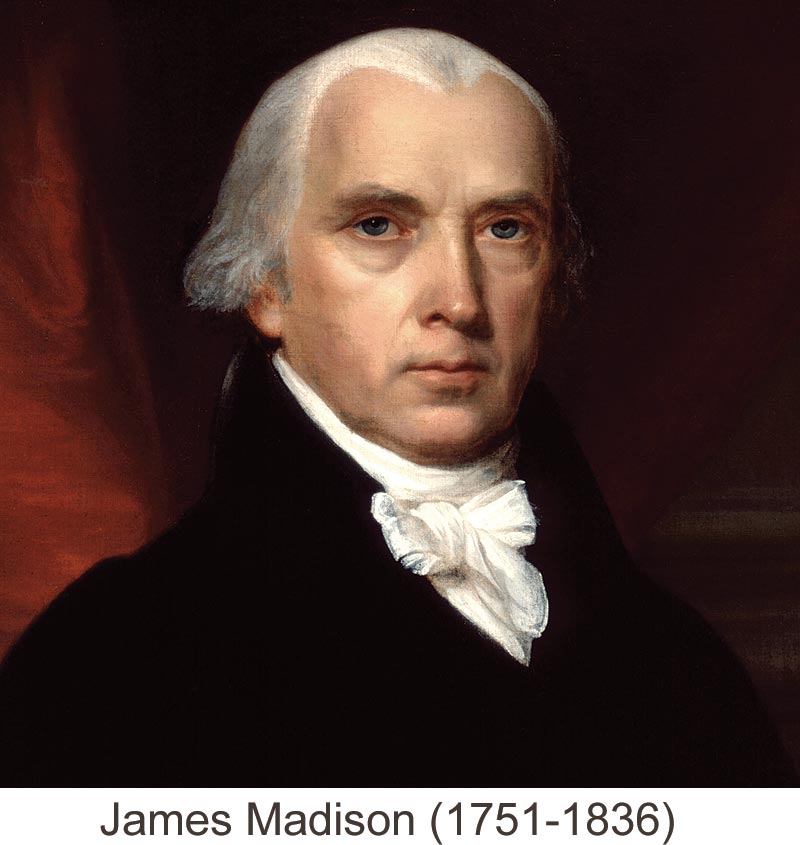 ames Madison suggested in 1783, following the securing of independence, the idea of a library for congressional use. In 1800, President John Adams signed into law the creation of The Library of Congress, along with an appropriations bill of $5,000.00 to get it started. They ordered 740 books and three maps from London, to be housed in the Capitol. Today there are 32 million catalogued books in 450 languages on more than 500 miles of shelves, and 5.3 million maps, not to speak of 61 million manuscripts, 6 million pieces of sheet music, 500,000 microfilm rolls; 15,000 items arrive every day of the year; (only 12,000 are added). The current annual budget for the Library of Congress is 684 million dollars. How did we get there? ames Madison suggested in 1783, following the securing of independence, the idea of a library for congressional use. In 1800, President John Adams signed into law the creation of The Library of Congress, along with an appropriations bill of $5,000.00 to get it started. They ordered 740 books and three maps from London, to be housed in the Capitol. Today there are 32 million catalogued books in 450 languages on more than 500 miles of shelves, and 5.3 million maps, not to speak of 61 million manuscripts, 6 million pieces of sheet music, 500,000 microfilm rolls; 15,000 items arrive every day of the year; (only 12,000 are added). The current annual budget for the Library of Congress is 684 million dollars. How did we get there?

Constructed between 1890 and 1897, the Thomas Jefferson Building is the oldest of the three main Library of Congress buildings
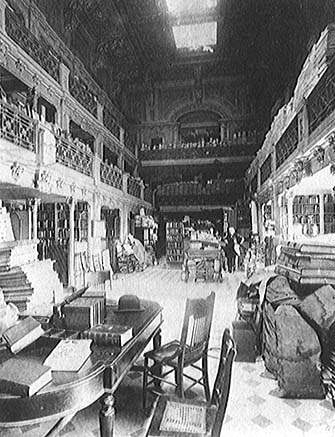
Until the construction of the Jefferson Building in 1897, the Library was housed inside the Capitol Building as shown in this 1890 photograph
|
In 1800, most members of Congress had to travel for days, and some for weeks, to arrive in Washington. They brought few books, and their boardinghouse lives were not conducive to much study. Access to books was a practical measure, especially as it increased in number and relevancy. On August 24, 1814 the British army of the War of 1812 marched into Washington, D.C. President Madison, to whom the original idea of a congressional library is credited, fled the city, carrying the few rescued items from the Presidential Mansion. The Red Coats burned the Capitol, including the 3,000-volume National Library. Thomas Jefferson in splendid retirement, offered his full library to Congress for the sum of $23,950.00, which amounted to about $3.69 per volume, a bargain basement price. Congress hotly debated for four months whether to purchase the books and restore the lost collection. All the congressmen who were graduates of Yale and Harvard voted no, as did all the other representatives from New York and New England, excepting Vermont. It passed 81-71 thanks to the many congressmen who were not college graduates. His 6,487 volumes became the heart of the new Congressional Library.
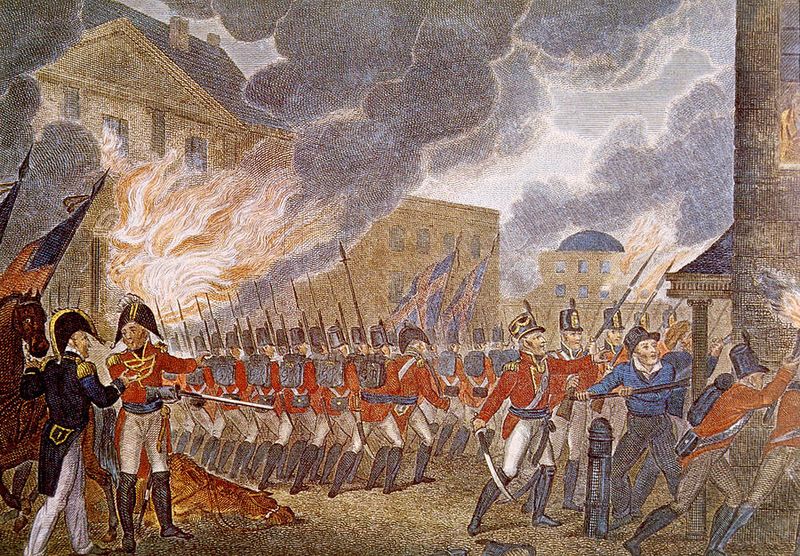
The burning of Washington, D.C. in 1814
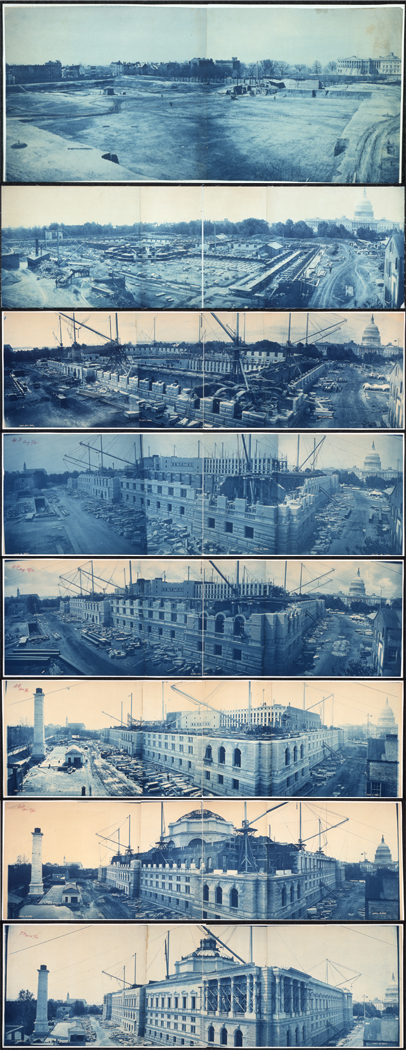
Photograph series showing the construction of the Thomas Jefferson Building from July 8, 1888 to May 15, 1894
|
On Christmas Eve in 1851, a faulty flue caught the library on fire again, destroying two-thirds of the 55,000 volumes, including about 4,000 of Jefferson’s books, as well as most of the art works — Stuart portraits of the first five Presidents, busts, and other irreplaceable artifacts. Congress responded quickly with appropriations of $168,700 to replace the books lost. Most of the Jefferson collection has been replaced over the years with the same editions he donated. His was a real scholar’s working library, not the haphazard showpiece of the typical gentleman’s library. Even in the 19th century, interior designers used books for a look, not practicality or usefulness.
After the Civil War, the institution under librarian Ainsworth Rand Spofford oversaw the construction of the magnificent Thomas Jefferson Building, the eclectic beaux arts style structure that contains much of the collection today, and is open for visitors. Completed in 1897 (with bi-partisan support!), it housed 840,000 volumes — 40% by “copy-write deposit.” They increased the staff from forty-two to one hundred eight. In the new century, the library persuaded Theodore Roosevelt to transfer by executive order the papers of the Founding Fathers from the State Department. The library began acquiring foreign language books and purchasing private collections, one of which included one of only three perfect vellum Gutenburg Bibles, which is usually on display in the Great Hall.
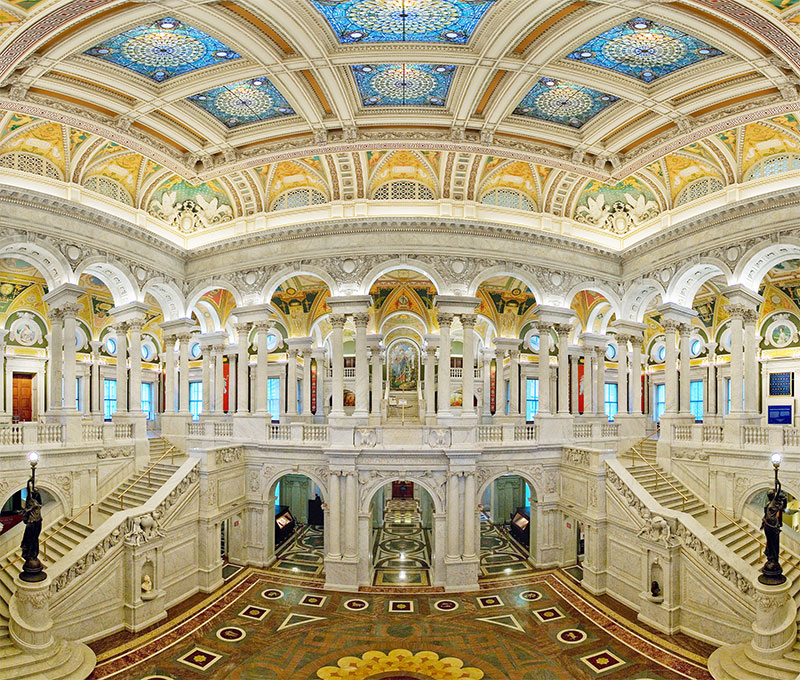
Great Hall of the Library of Congress inside the Thomas Jefferson Building
The library expanded to the Adams, then the Madison Building and eventually, opened the Packard Campus in Culpeper, Virginia for all the audio-visual holdings, including classic movies. Librarian James Billington, appointed by President Reagan and unanimously approved by Congress, served until 2016, expanding the digital holdings exponentially, as well as acquiring a copy of Magna Carta on loan, the Bay Psalm Book, and other almost priceless artifacts. He also raised over five hundred million dollars in private donations.
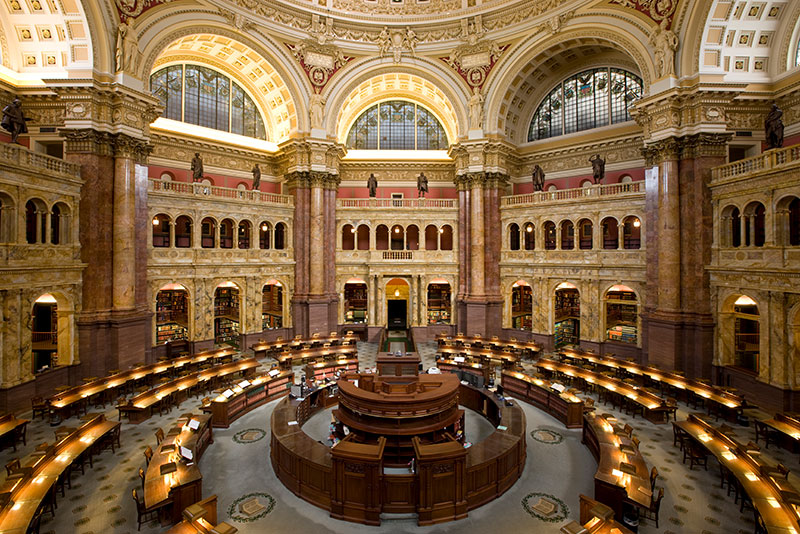
Main Reading Room of the Library of Congress inside the Thomas Jefferson Building
Scholars and researchers, as well as Congressmen, can use the library, although only in the reading room itself, and following strict rules, including acquiring proper clearance. The Library of Congress is the largest general library in the world, and only getting larger. Safeguards are in place so it will not burn down again.
|
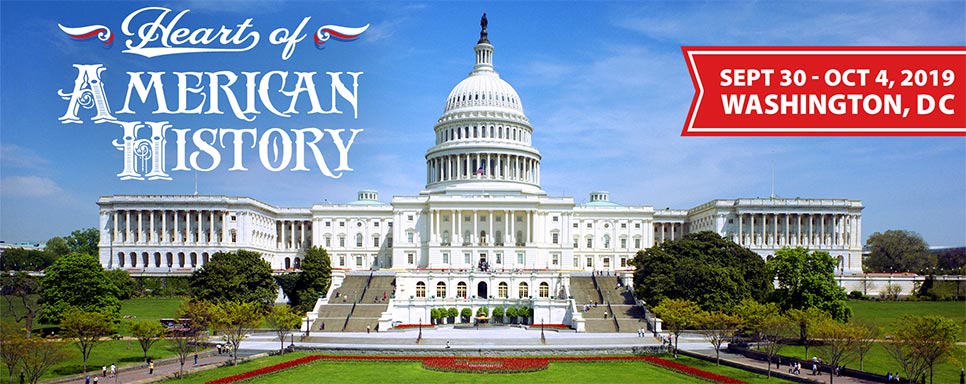 |
|
|
Join Us in Washington, DC!
Join Landmark Events Sept 30 - Oct 4 and see the Library of Congress for yourself! Plus, visit Mount Vernon, the Museum of the Bible, Arlington Cemetery, the Lincoln Memorial and much more... all part of our one-of-a-kind Heart of American History Tour!
Register by July 1 and Save 10%!
|
|
|

Image Credits:
1 James Madison (Wikipedia.org)
2 Library of Congress buildings (Wikipedia.org)
3 Burning of Washington, D.C. (Wikipedia.org)
4 LOC in Capitol (Wikipedia.org)
5 Construction of LOC (Wikipedia.org)
6 LOC Great Hall (Wikipedia.org)
7 Main Reading Room (Wikipedia.org)
|







